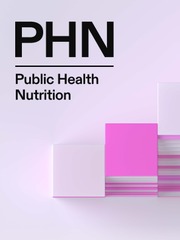No CrossRef data available.
Article contents
Intimate partner violence and reduced dietary iron and vitamin A intake: A population analysis of nationally representative data from eight low- and middle-income countries
Published online by Cambridge University Press: 14 April 2025
Abstract
This research provides the first population-based investigation of IPV and women’s dietary intake of iron and Vitamin A rich foods using representative data from eight low-and-middle-income countries.
Using multivariable logistic regression, we estimated the relationship between various forms of past year IPV (physical, emotional, and sexual) and consumption of Vitamin A and iron-rich foods.
We conducted secondary data analysis of cross-sectional Demographic and Health Surveys from Cambodia (2021, N=5,640), Nepal (2022, N=4179), Sierra Leone (2019, N=3,812), Nigeria (2018, N=8,313), Tajikistan (2017, N=4,800), Cote D’Ivoire (2021, N=3,656), Kenya (2022, N=10,758), and the Philippines (2022, N=12,278).
Women of reproductive age (15-49 years) comprised the analytical sample.
Results revealed distinct relationship patterns between various IPV forms and women’s dietary consumption of micro-nutrient rich foods. The most consistent relationships being that past year (i) sexual IPV (aOR: 0·72, 95%CI: 0·53-0·98), (ii) physical IPV (aOR: 0·86, 95%CI: 0·73-1·01), and (iii) emotional IPV (aOR: 0·81, 95%CI: 0·70-0·94) significantly reduced the odds of consuming iron-rich foods in the pooled analyses. Due to between country heterogeneity concerning the relationship between IPV and Vitamin A, pooled estimates for dietary Vitamin A consumption were non-significant. However, in the Philippines IPV was associated with reduced dietary Vitamin A intake.
IPV is associated with altered dietary intake patterns and between-country differences could be due to different food environments. Mechanisms explaining our findings may involve consequences of IPV that impact diet and dietary practices: depression, control of resources, and physical trauma.
- Type
- Research Paper
- Information
- Creative Commons
- This is an Open Access article, distributed under the terms of the Creative Commons Attribution licence (http://creativecommons.org/licenses/by/4.0/), which permits unrestricted re-use, distribution and reproduction, provided the original article is properly cited.
- Copyright
- © The Author(s), 2025. Published by Cambridge University Press on behalf of The Nutrition Society


